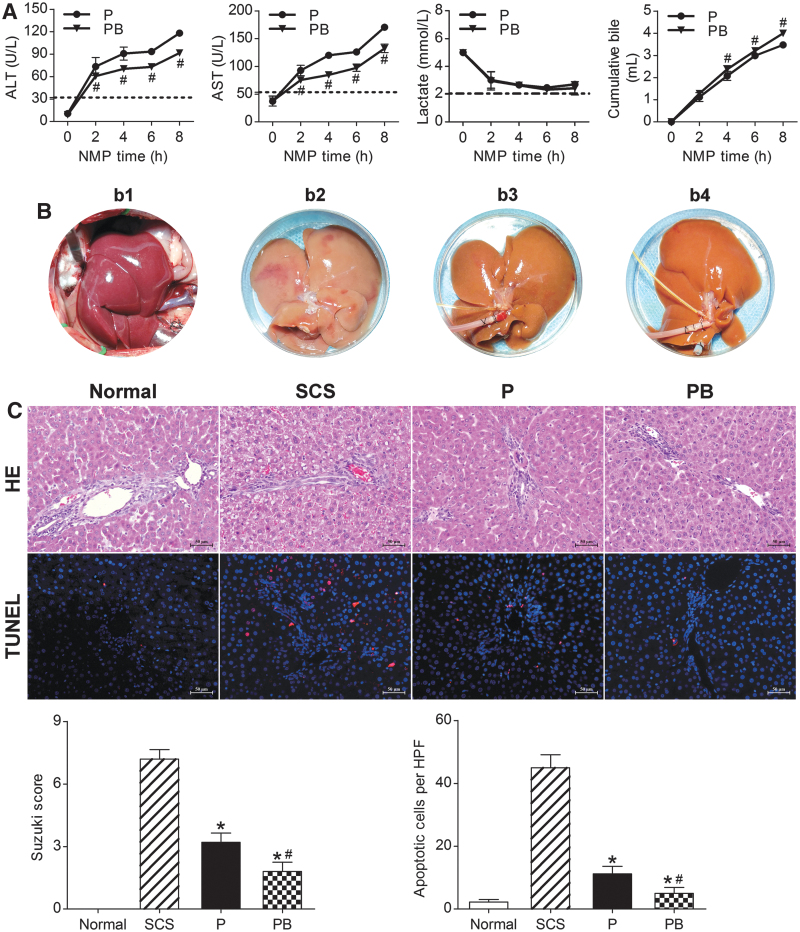FIG. 4.
NMP combined with BMMSCs improved DCD liver quality. (A) Liver function ALT, AST, lactate clearance, and bile levels (n = 5). (B) DCD liver manifestations: (b1) warm ischemia, 30 min; (b2) SCS 6-h; (b3) NMP 6-h; (b4) NMP combined with BMMSCs 6-h. (C) DCD liver HE staining, TUNEL staining, Suzuki's scores, and apoptosis statistics. The SCS group had severe HE assessment, cell vacuolar degeneration, edema, and hepatic sinusoid congestion; the PB and P groups had almost no vacuolar degeneration, hepatic sinusoid congestion, or inflammatory cell infiltration (scale bar = 50 μm). The Suzuki score of the PB group was significantly lower than that of the P and SCS groups (Normal group: 0.00 ± 0.00, SCS group: 7.20 ± 0.45, P group: 3.20 ± 0.45, PB group: 1.80 ± 0.45, n = 5). TUNEL: red indicates apoptotic cells; DAPI-labeled nuclei appear blue (scale bar = 50 μm). The number of apoptotic cells in the Normal group were the lowest, and was significantly lower in the PB and P groups than in the SCS group (Normal group: 2.20 ± 0.84/HPF, SCS group: 45.00 ± 4.12/HPF, P group: 11.20 ± 2.39/HPF, PB group: 5.00 ± 1.87/HPF, n = 5). *P < 0.05 versus SCS group, #P < 0.05 versus P group; the dashed line indicates the levels in normal rats. ALB, albumin; ALP, alkaline phosphatase; DAPI, 4′ 6-diamidino-2-phenylindole; HPF, high-power field; P, NMP; PB, NMP combined with BMMSCs; SCS, static cold storage; TUNEL, terminal deoxynucleotidyl transferase dUTP nick end labeling.

